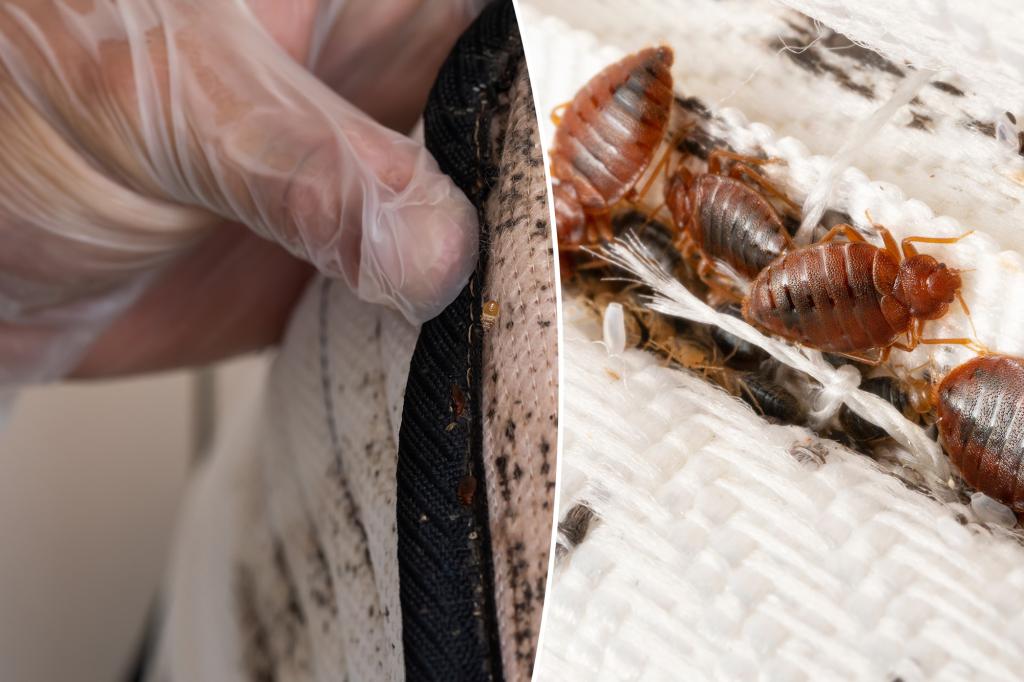Bed Bug Battles: New York’s Dramatic Drop in Infestations
In a surprising turn of events for New York City, the metropolis known for its persistent urban pests has achieved a remarkable victory in one category: bed bugs. According to Orkin’s newly released 2025 list of “Worst US Cities for Bed Bugs,” New York has plummeted 13 positions in the rankings, dropping from an alarming second place in 2024 to a much more respectable fifteenth place this year. This dramatic improvement stands in stark contrast to the city’s ongoing struggles with rats and roaches, offering a rare bright spot in its battle against household pests. The significant decline in bed bug treatments across homes and hotels throughout the five boroughs represents an impressive achievement, particularly considering the notorious resilience of these persistent parasites. As Ben Hottel, a leading Orkin entomologist, explains: “Bed bugs are some of the most resilient pests in the world, making them extremely difficult to control if brought into a home or hotel.” This context makes New York’s substantial improvement all the more noteworthy, suggesting coordinated efforts in detection, prevention, and treatment may be paying off across the city.
While New York celebrates its progress, Chicago continues to hold the unfortunate distinction as America’s bed bug capital for the fifth consecutive year. The Windy City remains firmly entrenched at the top of Orkin’s list, followed by Cleveland, which climbed two positions to claim second place, and Detroit, which rose three spots to round out the top three. Los Angeles and Indianapolis complete the top five most infested cities, demonstrating that bed bugs remain a nationwide urban challenge affecting diverse metropolitan areas. These rankings, based on the number of bed bug treatments performed by Orkin professionals in residential homes and hotels, provide a window into the geographic distribution of these parasites across the country. The persistence of bed bugs in certain cities highlights the ongoing challenges in controlling these pests, which are notoriously difficult to eradicate once established in a location.
New York isn’t alone in its success against these blood-feeding insects. Philadelphia made an even more dramatic improvement, plunging from third place in 2024 to twenty-fourth in this year’s rankings. Similarly, Charlotte dropped from ninth to thirty-first place, suggesting that effective bed bug management strategies may be gaining traction in multiple urban centers. Orkin attributes these improvements to increased vigilance and better prevention practices, particularly emphasizing the importance of thorough inspection routines during and after travel. These success stories provide valuable lessons for other cities still struggling with significant infestations. The substantial improvements in New York, Philadelphia, and Charlotte demonstrate that while bed bugs are formidable adversaries, coordinated control efforts can yield meaningful results, even in densely populated urban environments where infestations traditionally spread more easily.
On the opposite end of the spectrum, Hartford, Connecticut, experienced the most dramatic negative shift on this year’s list, leaping 48 positions to claim the thirty-fifth spot. This alarming increase suggests a potentially emerging bed bug crisis in the region that may require immediate attention from local authorities and pest control professionals. Other cities showing concerning upward movement include Milwaukee, which jumped fifteen places to enter the top ten, and Pittsburgh, which climbed nine spots to reach the twelfth position. These significant increases highlight the dynamic nature of bed bug populations and the importance of continuous monitoring and prevention efforts. The dramatic fluctuations in rankings from year to year illustrate how quickly bed bug situations can evolve within urban centers, underscoring the need for sustained vigilance and proactive management approaches.
The methodology behind Orkin’s rankings provides valuable insights into the prevalence of bed bugs across American cities. By tracking the number of professional treatments performed across residential and commercial properties, the list offers a data-driven assessment of infestation levels nationwide. While this approach doesn’t capture do-it-yourself treatment attempts or unreported infestations, it provides a consistent metric for comparing bed bug activity between cities and tracking changes over time. The dramatic shifts seen in cities like New York, Philadelphia, and Hartford demonstrate the fluid nature of urban bed bug populations and the potential effectiveness of coordinated control strategies. These rankings serve not only as a warning system for travelers but also as a tool for public health officials to assess the effectiveness of local pest management policies and educational campaigns.
For residents and visitors alike, the key takeaway from Orkin’s report is the critical importance of prevention and early detection in controlling bed bug infestations. Experts consistently recommend thorough inspection of hotel rooms upon arrival, careful examination of luggage and clothing after travel, and prompt professional intervention at the first sign of bed bugs. The dramatic improvements seen in cities like New York demonstrate that even severe bed bug problems can be addressed successfully with proper attention and resources. As urban centers continue their never-ending battle against various pests, New York’s significant progress against bed bugs offers a template for success that other cities might follow. While the Big Apple may still contend with its infamous rat population, its residents can take comfort in knowing that at least one persistent pest problem appears to be receding—a small but meaningful victory in the ongoing challenge of urban pest management.


